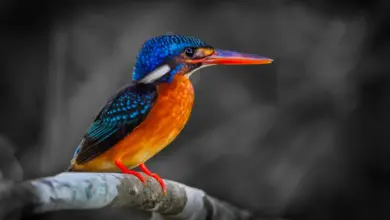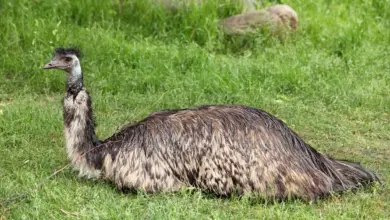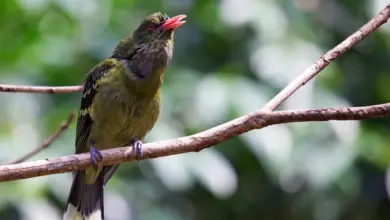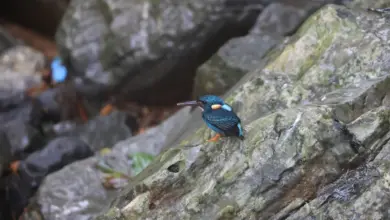Salvadori’s Pheasant (Lophura inornata)
The Salvadori’s pheasant (Lophura inornata) is a rare and elusive bird species found only on the island of Sumatra in Indonesia. First described scientifically in 1879 by the Italian ornithologist Tommaso Salvadori, these pheasants belong to the Phasianidae family of gallinaceous birds, which includes pheasants, partridges, and other game birds.
Salvadori’s pheasants are closely related to other pheasants in the genus Lophura, such as the crested fireback and Bulwer’s pheasants.
However, Salvadori’s pheasant has no close living relatives, making it something of an outlier in the Lophura genus. Its scientific name, Lophura inornata, reflects its relatively plain plumage compared to the more vividly coloured Lophura pheasants.
Based on morphological analysis and DNA evidence, taxonomists recognise Salvadori’s pheasant as a distinct species under the current Linnaean classification system. It has no known subspecies at this time.
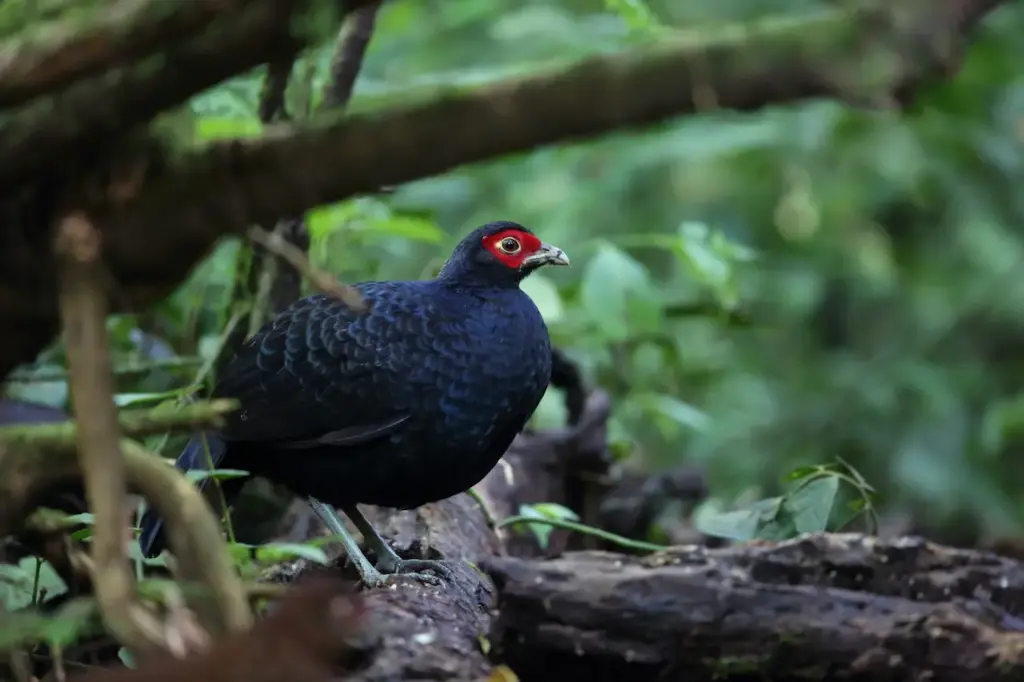
Salvadori’s Pheasant Description and Physical Features
Salvadori’s pheasants are medium-sized with rather nondescript plumage overall, especially among female birds.
Size
Salvadori’s pheasants, known for their striking physical characteristics, exhibit significant size differences between males and females.
The male birds are truly impressive, measuring an astounding total length of about 90 cm (35 in), including a gracefully long tail that spans approximately 36 cm (14 in). Along with their impressive length, male Salvadori pheasants carry a substantial weight, typically ranging from 750 to 900 g (1.7 to 2 lb).
In stark contrast, the females of this species are noticeably smaller. Their total length hovers around 65 cm (26 in), and they weigh significantly less, ranging from 500 to 700 g (1.1 to 1.5 lb). This distinct sexual dimorphism showcases the intriguing diversity within Salvadori’s pheasants, emphasizing the remarkable variations in size and weight between the genders.
Salvadori’s Pheasant Plumage
Male Salvadori’s pheasants boast striking olive-brown upperparts, wings, back, rump, and tail, enhanced by a blue-black sheen that glistens in certain lighting conditions. Their olive-brown head is adorned with a bushy crest, and their throat and neck sides feature intricate black and white barring.
The breast transitions from olive-brown to orange-buff on the belly and flanks. These males exhibit vibrant red facial skin and distinctive bare yellow patches around their eyes.
In contrast, females share a similar appearance with males but possess duller plumage. They have a smaller crest and lack the red facial skin and bold eye patches seen in males.
Instead, females plumage has unfeathered grey facial skin and smaller grey patches around the eyes. Their underparts are buff-coloured with less prominent barring than their male counterparts.
Both sexes have yellowish legs and feet. As with many pheasant species, the female Salvadori pheasant has evolved cryptic plumage to better blend into the dense undergrowth while nesting.
Salvadori’s Pheasant Voice and Sounds
Salvadori’s pheasants produce a variety of cackling, crowing, and clicking vocalisations, as typical of most pheasants. Males may utter harsh, laughing calls during courtship displays. The function of various calls is poorly studied in the wild.
Salvadori’s Pheasant Diet and Feeding
These terrestrial pheasants forage primarily on the ground in forest habitats. Their diet consists mainly of seeds, fruits, leaves, and shoots, as well as insects, grubs, and other small invertebrates, which are caught by pecking and scratching through leaf litter.
Males have stout spurs on their legs that may help them flip over debris while foraging.
Salvadori’s Pheasant Distribution and Habitat
Endemic to the island of Sumatra, Salvadori’s pheasants historically occupied lowland and hill forests up to about 1,400 m elevation. However, due to extensive deforestation across Sumatra, their natural range has become fragmented and greatly reduced.
Today, viable populations likely persist only in pockets of primary forest in certain protected areas and national parks, including:
- Kerinci Seblat National Park
- Bukit Barisan Selatan National Park
- Way Kambas National Park
- Gunung Leuser National Park
Within suitable forested habitats, Salvadori’s pheasants prefer thick undergrowth with dense vines and ferns near water sources such as streams or swamps. This provides cover and abundant foraging opportunities. They may also use peat-swamp forests where pandan plants dominate the understory.
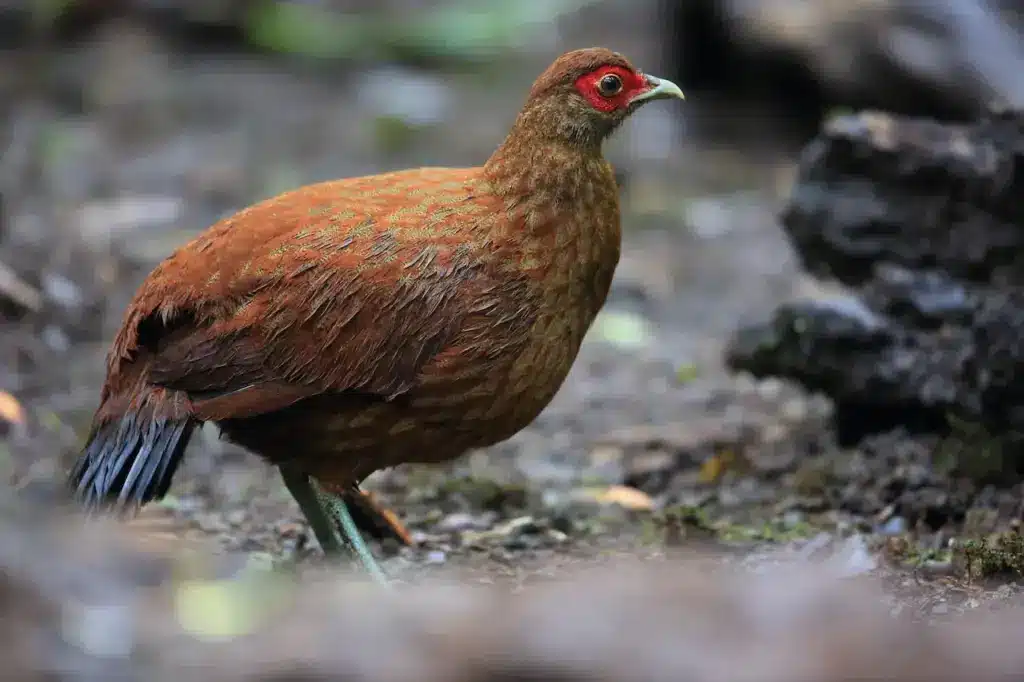
Salvadori’s Pheasant Conservation Status
Due to ongoing habitat destruction across its native Sumatra, Salvadori’s pheasant is considered Vulnerable by the International Union for Conservation of Nature (IUCN). Its total population is estimated to be between 2,500-9,999 mature individuals, but the true population size is uncertain.
Major threats contributing to the species’ decline include:
- Widespread deforestation for logging and oil palm plantations
- Forest fires intentionally set for land clearing
- Unsustainable hunting and trapping
- General fragmentation of suitable lowland forest habitat
Conservation actions needed to protect remaining populations include:
- Strengthen legal protections and enforcement against poaching
- Improve management and range connectivity within protected areas
- Restore degraded forest habitats within their historic range
- Conduct updated surveys to determine population sizes and trends
- Initiate a captive breeding program as a safeguard
Salvadori’s Pheasant Behaviour and Ecology
Relatively little is known about the behaviour of Salvadori’s pheasants due to their remote forest habitat and skittish nature. However, some aspects of their natural history have been documented:
Salvadori’s Pheasant Social Structure
During the breeding season, male Salvadori’s pheasants establish solitary territories spaced throughout the forest undergrowth. Within these territories, males display to visiting females and mate with any receptive hens.
The rest of the year, Salvadori’s pheasants may form loose flocks outside of the breeding season, though more typically, they are solitary or found in pairs.
Salvadori’s Pheasant Breeding and Reproduction
Courtship displays by male Salvadori’s pheasants include puffing up their feathers, fanning and shaking their tails, and picking up bits of debris in their bills while calling.
Once paired, females lay a clutch of around 5-6 eggs in a nest scraped on the forest floor, lined with leaves and other vegetation. Incubation lasts 22-24 days. The precocial young accompany the female soon after hatching.
Salvadori’s Pheasant Predators and Threats
Natural predators of Salvadori’s pheasants likely include hawk-eagles, snakes, and mammalian carnivores like the Sumatran tiger.
Humans pose the greatest threat due to heavy deforestation and unsustainable hunting practices across Sumatra. The species’ natural wariness helps protect it from overharvesting.
Salvadori’s Pheasant Lifespan and Mortality
No data are available on longevity or mortality rates in the wild population. In captivity, Salvadori’s pheasants may live 10 years or more.
Chicks and juveniles likely experience high predation rates. Infectious diseases and parasites may also contribute to natural mortality.
Relationship to Humans

Salvadori’s pheasants have little direct economic importance for humans, although they are still poached and trapped for meat locally, despite legal protections. Their attractive plumage holds some interest in the captive bird trade as well.
Beyond economic incentives, the species can serve as an umbrella species for conserving its threatened lowland forest habitats on Sumatra.
Ecotourism potential also exists for birdwatchers hoping to catch a glimpse of this rare and elusive rainforest pheasant. However, habitat encroachment must be effectively managed to prevent additional population declines.
Going forward, Salvadori’s pheasants would benefit greatly from expanded surveys, tracking studies, and ecological research across their present range. Local community engagement and forest preservation efforts focused on key protected areas will also give this Vulnerable species its best chance at recovery.
Though striking and little-known, dedicated conservation action can still secure a future for the Salvadori’s pheasant in its native Sumatran forests.
Conclusion
The Salvadori pheasant is a rainforest-dwelling species facing an uncertain future due to extensive deforestation across its native Sumatra.
However, opportunities remain to stabilise and potentially expand the wild population through increased legal protections, anti-poaching efforts, landscape connectivity, and community stewardship.
More thorough population surveys and ecological research can further inform evidence-based conservation strategies going forward.
Suitable habitat protection and restoration initiatives focused on key protected areas offer the best chance for preserving Salvadori’s pheasants in the wild. With dedicated human commitment, these striking birds can persist as an integral part of Sumatra’s threatened forest ecosystems.

